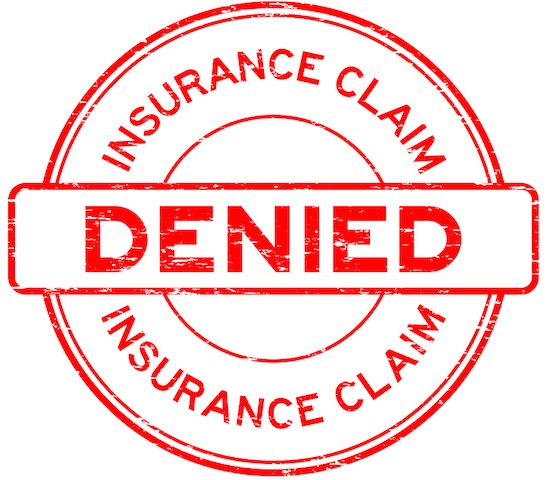We’ve lost track of how many times the beneficiary of a life insurance policy was told their claim was contestable, only to find out through our investigation that it wasn’t. It’s one reason we’ve been able to deliver over $50 million of claim benefits to our clients.
What is a contestable life insurance claim?
Contestability, of course, is the difference between getting an automatic, no-questions-asked claim payout versus having to wait months for the insurer to look for ways to deny the claim. The contestability of a life insurance policy is found in the Incontestability clause of a policy and is a contractual right of the issuing insurer.
When does the 2 year contestability period start? Dates, dates and more dates
The contestability period is measured from some starting date, and for 2 years thereafter. Of course, the question is, ‘when does the contestability period starting date begin?’ Is it the day the application was signed? Is it the day the first premium was paid? Or, is it based on a different day completely?
Many of the mistakes we’ve uncovered in regard to contestability – like insurers telling a beneficiary their death claim is contestable when, in fact, it isn’t – are due to the insurance company not looking at the policy when a claim is made. Instead, they just looked at the Issue Date they have recorded in their computer records.
But, computer records are usually summaries or bits and pieces of a larger document. For life insurance policies, computer records aren’t inclusive of the entire policy. They tend to have very little detail and a deeper look is often needed.

Here we’ve taken a closer look and identified some of the more common items that cause confusion in determining whether a death claim is or isn’t contestable.
- Newly issued policies have a lot of dates
- Issue Date: This is the date that the underwriter has satisfied his requirements and the insurer accepts the insured as a policyholder. In some policies the Issue Date will be before the Policy Date and in other policies it will be after. If this is the date the insurer is basing contestability on, then it can’t conflict with any policy language indicating the contestability period is based on premiums.Effective Date: This is most often the date after the policy has been approved and the first premium has been paid. Where complications can arise is when the first premium is paid before the policy is issued or when a 1035 exchange is included with the application. For example, when the client signs the application and the agent takes a check, he or she is binding the policy. The binding date may take precedent and become the date the contestability period begins. Or, the Effective Date can be well before a premium is paid. Confused? Yes, the Effective Date varies a great deal from policy to policy, but it’s a critical item for determining contestability.
Application Date: This is the date the client signed the application. This may also be the day the contestability period begins. If the insurer asks the applicant to sign a second application (which is common when underwriting takes more than 45 days), then the question arises, ‘which application date should be used to determine the contestability of the claim?’
Policy Date: This is sometimes the same as the Effective Date, but sometimes it’s not. And, the Policy Date can have conditions like, ‘we must receive your premium for the policy to become effective’. The Policy Date is probably different than the Issue Date. And, very likely the Policy Date is different than the date the first premium was paid. What the Policy Date usually refers to is when the next change in charges occurs or when the next premium is due.
The date that determines when a claim’s contestability period ends is going to be different than another person’s date because each policy has different language. It’s not always the same for every company or even the same for every policy issued by the same company. Each policy needs be looked at individually to determine which date starts the contestability period.
- Backdating an application
Backdating a life insurance application (which is a questionable practice) is when the insured accepts a Policy Date that is prior to the date the application was signed. It’s a confusing concept and is further confused when measuring the contestability of a life insurance claim. Someone would accept a backdated policy thinking they will have lower fees for their policy. This may or may not be true, but the reason it’s important for a death claim is it could mean the difference between a contestable and an incontestable claim.
Most beneficiaries have no idea if the policy they’re making a claim on was backdated or how to even identify backdating. The question of if a policy has been backdated and how that impacts contestability should be determined by a professional.
- Death benefit increases aren’t new policies
When you have an in-force policy and you add death benefit to it, you’ve completed a death benefit increase. The standard practice in the life insurance industry is to keep the same policy, the same policy number and simply add more death benefit. When a claim is filed only the amount of death benefit that was added within the past two years should be contestable, not the entire policy. The language of the benefit increase, as well as the paperwork that caused the increase, must be reviewed and evaluated to get the correct contestability date.
- Exchanging one policy for a new policy
To add more confusion and possibility for mistakes there’s also the exchange date. When an insured starts with one policy – let’s say a term insurance policy – and exchanges it for a different type of policy with the same company, they’ve completed an exchange.
Each company has their own rules about what this constitutes regarding contestability. Some companies use the date of the original policy. Other companies use the date of the new policy. The language of the offer to exchange, as well as the paperwork that was completed, must be evaluated to get the correct contestability date.
- Tax-free exchange of cash value is premium
Any form of payment of a premium before the policy is approved can be binding and start the contestability period. Many life insurance policies are sold with the cash value of an old policy transferring into a new policy. This of course is known as a 1035 Exchange. The policyowner signs a form accepting this event and it’s usually done at the same time the new application is completed.
Even though the new policy hasn’t been approved yet, the papers accepting the transfer of cash value is a form of premium. It binds the new policy. Under this scenario the new policy may have a starting date for contestability before the approval date. The same can be true of submitting a check or credit card charge with an application.
- Policy lapse vs. reinstatement? Knowing which date applies
Most life insurance policies have a 31-day reinstatement period. This is the time the policyowner has to catch-up on late premiums without losing their coverage. The lapse period is different than the pre-lapse period. Pre-lapse is 31 days immediately after the premium was due. Lapse is 31 days after pre-lapse. If the past-due premium is paid in this 62-day time-period, there’s no change to the contestability period.
However, if premiums aren’t paid then the policy will lapse. If the policy is reinstated after 62 days, a new contestability period will begin. The important question is not when did the policy lapse, but what efforts did the policyowner make to keep the policy in effect? This can make all the difference between a claim being contestable or incontestable.
What’s the big deal about a life insurance claim being contestable?
In a word, Money.
The day that a life insurance policy passes the contestability period, any claim made for the death benefit must be paid immediately by the insurer. On the other hand, a claim made against a policy that has even one more day of contestability will be inspected for any possible reason the insurer can use to deny the claim.
The reasons an insurer can use to deny a claim include misstatements of: finances, arrests, drug use, tobacco use and, the most common, medical history.
Claims that aren’t contestable don’t get investigated. Claims that aren’t contestable get paid in 30 days. Claims that aren’t contestable don’t get denied.
When beneficiaries of your clients have death claims to file, don’t just assume they’re not contestable. If the end of contestability is close to the date of death, check and double-check whether their claim is subject to review or should be paid immediately.
Stephen C. Burgess is the President of the Center for Life Insurance Disputes. The Center for Life Insurance Disputes represents beneficiaries of denied life insurance and accidental death insurance claims.














Great Article thanks for sharing.